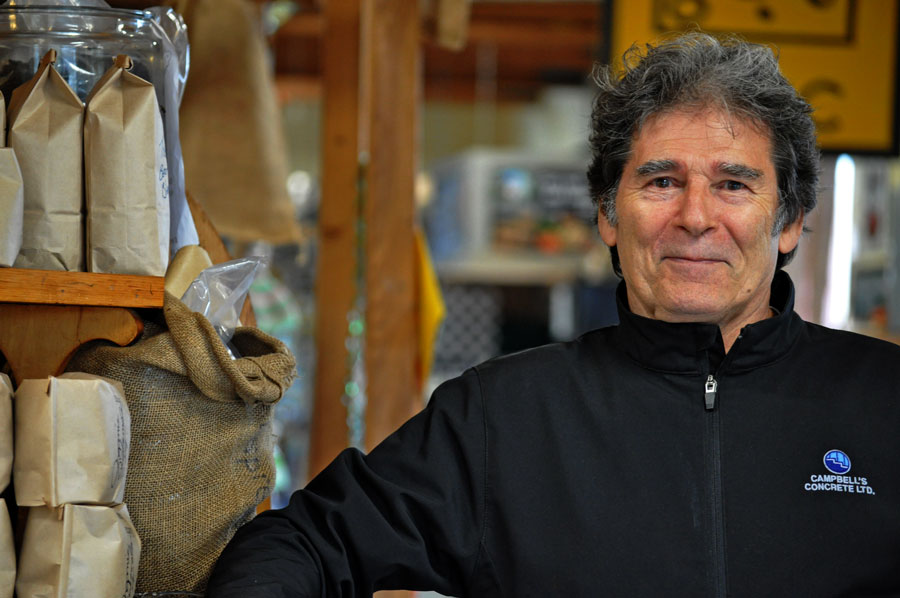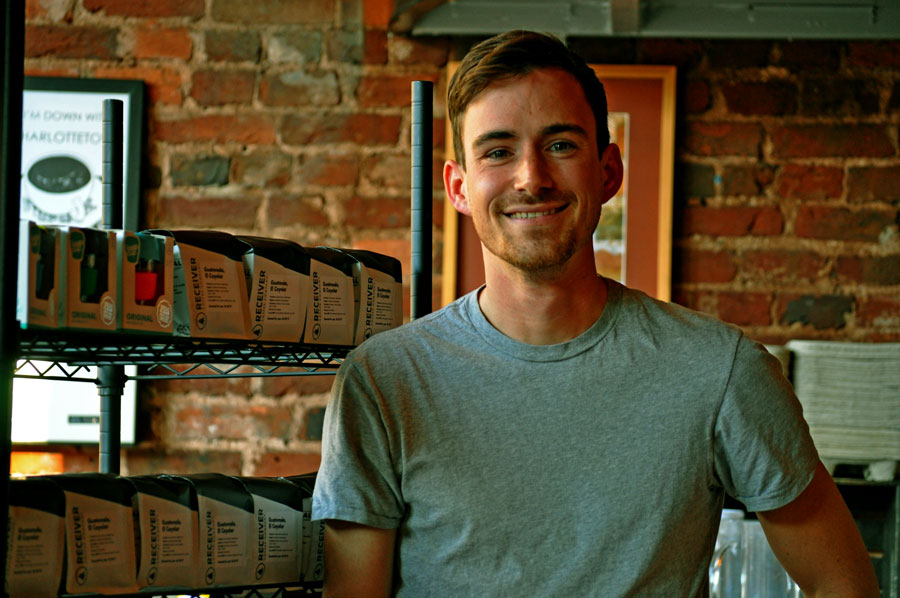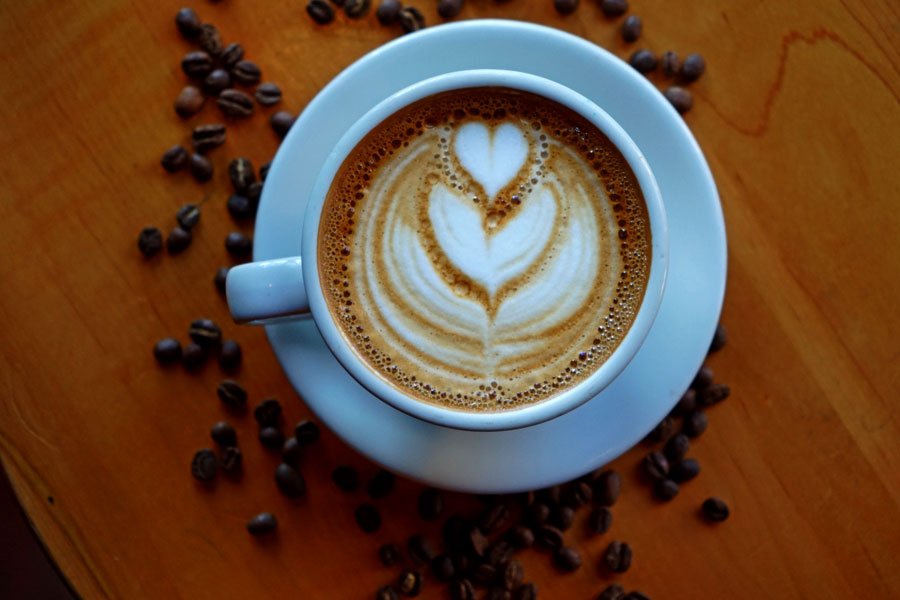According to the Coffee Association of Canada, coffee is Canada’s most popular beverage choice for adults over the age of sixteen–even more than tap water
My mother-in-law often insists that her morning coffee is part of her daily recommended fruits and vegetables. “It’s a legume,” she laughs. While that is nominally true, she’s not actually right. Coffee beans are actually the seed (or pit) of the coffee fruit.
She joins a cast of many Canadians who start their day (or improve it) with a hot, steaming cup of picked, dried, separated, milled, then selected, shipped, and roasted seed-bean-pits. In fact, according to the Canadian Coffee Drinking Trends Study done by the Coffee Association of Canada, a whopping eighty-six per cent of Canadians between the ages of sixteen and seventy-nine drank coffee in the last year. If we boil that down (pun intended), you’ll find that statistic makes coffee more popular than tap or bottled water.
Islanders enjoy a great deal of the hot stuff, and while we don’t have statistics, we can see the effects of this preference with the amount of chain and boutique coffee shops and roasters operating here in the tiniest province. Indisputably, Brett Bunston of Caledonia House, operating out of Caledonia and selling out of the Charlottetown Farmers’ Market since 1988, owns the title of coffee pioneer of Prince Edward Island.
“Well I worked at a cafe in Montreal called the [Café] Santropol pretty much since its inception. Friends of mine started it in the 70s and I worked on and off while I was doing film work. So I worked at the cafe.” Bunston developed a skill and an appreciation for making and serving coffee, but we haven’t reached the origin story. Not yet. First he had to move to PEI.
“When I came here I was doing construction. We came down and visited some… friends of Theresa’s who had [Charlottetown Farmers’ Market] booth space at the time. I kind of said aloud ‘I should sell something. Maybe I’d like to apply for booth space’ and they asked me what I wanted to sell. I said I’d find something.”
What he found was an espresso machine for sale. The only retailer for specialty coffees he knew about was a shop called The Perfect Cup on Great George Street in Charlottetown, an early venture for Bruce MacNaughton, who became much more widely known later on for his preserves. “The only machine on the Island [at that point] was at Bruce MacNaughton’s. And it didn’t work all of the time.”
So Brett started his business with a love of coffee and his new-to-him espresso machine. But it proved just as temperamental as his downtown counterpart’s apparatus.
“I just couldn’t afford the downtime or the expense of sending the machine off to Montreal to be fixed then sent back. So I eventually started doing my own repairs. I actually really enjoy it still.”

Brett Bunston, owner of Caledonia House Coffee Photo credit: Laura Weatherbie/Salty
A large part of the business came from supplying and repairing equipment to restaurants who wanted to elevate their own coffee offerings. He described the process of fixing a broken machine, and that when it’s working again, there’s a satisfaction with completion.
“Most of my business is human relations. You know with customer service that’s never finished, so it’s really nice to have something that’s final. That’s finite.”
But Bunston doesn’t do this alone. He has a team helping to roast, service, deliver, as well as serve piping hot beverages prepared in a myriad of ways. Tom Defusco has been working with Bunston as his production roaster almost since the beginning of the business.
“We’ve been working together for… well I’ve been doing this for 32 years, he’s probably been involved 28 of them.”
His son, Patrick Bunston, is a veteran of the industry at the young age of 25. “He started working with me at 13. I don’t know anyone who pulls a better shot than Patrick. Well, actually I can pull the shot but he does the milk better.”

Photo credit: Cheryl Young/Salty
But what of the beans themselves? There are many brewing types but there aren’t quite as many ways to roast a bean, are there? Turns out, according to Bunston, what us non-professional coffee drinkers chalk up to simply the original-source beans, can be very affected by decisions made at roasting time.
“It’s the same as a brew master. Everyone sets their own point. There are a couple of things, a couple of factors. One is the drop temperature, and how long you roast. The objective is to get it to the degree of roast you want, without what’s called ‘tipping’. So as you roast the coffee, the moisture evaporates, so it runs to the end of the bean. If it boils, it’s called tipping. It will be bitter, and you can’t get rid of that.”
“You want to bring it along as quickly as you can, because it’s roasting. Not cooking, not baking. You want it to pop, so that first roast, well, it’s a polysaccharide that’s converted to a starch, then the starch is caramelized as you roast.”
With all of the roasters on PEI, there is definitely not a homogenous style or flavour profile for coffee. Most sippers will say they have a preferred roaster or style, but most prefer different flavours at different times.
When new bean shipments come in, Defusco sets the roasting points they’ll need to use for those particular beans. He’ll do small batches and record at what temperatures and times are optimal based on the flavours and colours produced. He keeps a small sample of the beans to colour-match what’s roasting with the desired test sample.
Chris Francis, co-owner of Receiver Coffee in Charlottetown, agrees that coffee is under the direct control of the roaster, and also believes that bean selection has a significant impact on the overall experience.

Chris Francis, co-owner of Receiver Coffee Photo credit: Laura Weatherbie/Salty
“There are a lot of different styles of roasting coffee. It’s just like brewing beer or making wine, and I always say this when anybody asks me my opinion on coffee roasting, there are different ways to do it. There are no right or wrong way, just the way that you subscribe to. We describe how it’s roasted as the fingerprint or the mark you leave on the coffee.”
He says that when you’re buying good quality coffee, you’re starting with a raw product that inherently has its own flavour value based on how it was farmed, the varietal of coffee, and the processing method. When you are going to roast it you can choose what flavours and characteristics you bring out of the coffee.
“So if we buy a coffee that’s really fruity and has a lot of nice acidity and juiciness to it, or really unique flavor profile, we want to make sure that when we roast the coffee, we do everything that we can to bring that to the forefront of the cup of coffee.”
But in addition to tracking down the beans with flavours that fit the profile of Receiver’s coffee palate, Francis says that they’re trying to be more educated and thorough about where the beans they’re buying are sourced from, and how much of their coffee buying power can go directly to the primary producers that grow this resource.
“Now that we’re at a scale where we have a little more buying power—even though we’re really still a small roaster—we put a lot of emphasis on developing more relationships with our farmers.”
For a long time, Francis asserts, “direct trade” was a term easily floated out to seem more socially responsible, but the Receiver team wanted to embrace what that actually meant.
“I don’t want to do it for the name association or the brand association. We want to do it because as North Americans we are wildly privileged compared to the people that we’re buying our coffee from.”
“We are developing relationships that allow us to actually give the people, the farmers who are creating this product for us, a fighting chance and give them whatever resources we’re able to give them. It’s our social responsibility as a coffee roaster. Can we go 100% direct trade overnight? No, we still have to build our business in a sustainable way.”
Francis said that in the long run, paying a fair price directly to the producer can change the face of the coffee trade. “At the end of the day replacing all non-specialty coffee with specialty coffees that are transparent and ethically sourced coffee; those are the kind of things we think about the most as our identity as a roaster.”
Guy and Cindy Cousineau (The Rooster Roasters) started roasting coffee for their bed and breakfast guests about six years ago. They had never roasted their own beans before but they wanted to serve their guests something personal.
“We get beans from Brazil, Peru, Colombia, and Sumatra,” he said. The Cousineaus recently received Organic Fair Trade and Rainforest Alliance certifications. “We roast in really small batches, about two pounds each. We only roast about 10 pounds a week. But with small batches we can guarantee the quality, the freshness. This is fresh coffee.”
At the end of the day, Bunston says that any education in coffee will help people appreciate the special coffee flavours that local roasters have on offer.
“People want to be educated. They want to know what’s going on. They want to know where their coffee comes from. They want to know how it’s processed, how it’s roasted. So that’s the value added. Not only are we sourcing better quality beans, which, by the way has made everyone raise their socks, right? But all the coffee that’s served [in PEI] now is better because of the microroasters.”
- CANADA’S AGRICULTURE DAY 2020 - February 10, 2020
- ROASTING ON PEI - November 1, 2019
- THE SALTY CHEF - October 1, 2019
- A YEAR LATER, STILL COOKING - August 1, 2018
- SPRING FESTIVAL FOOD - February 1, 2018
- Grandma Phoebe’s Mustard Pickles - November 1, 2017
- Namaste Lamb, Fall Flavours September 23, 2017 - September 25, 2017
- Lobster Party on the Beach 2017 - September 10, 2017
- Oysters on the Pier 2017 - September 10, 2017
- Going the Extra Mile While Buying Close to Home - September 1, 2017

